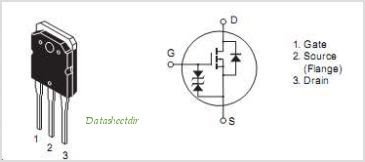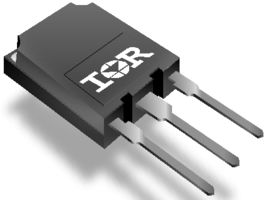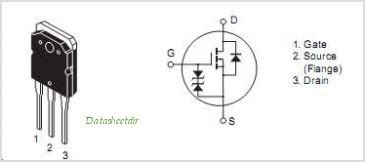In this post I have explained the main differences between an IGBT and a MOSFeT device. I have explained more about the facts from the following article.
Comparing IGTB with power MOSFETs
The insulated-gate bipolar transistor features a voltage drop which is significantly low when compared to a conventional MOSFET in the devices which have a voltage of higher blocking.
The n-drift region’s depth must also increase along with an increase in the rating of the blocking voltage of the IGBT and MOSFET devices; and the dropping needs to be decreased which results in a relationship which is a square relationship decrease in the forward conduction versus the device’s blocking voltage capability.


MosfetIGBT
The resistance of the n-drift region is reduced significantly decreased by introducing holes or minority carriers from the p-region which is the collector to the n-drift region during the process of the forward conduction.
But this reduction in the resistance of the n-drift region on the on-state forward voltage comes with the following properties:
How IGBT Works
The reverse flow of the current is blocked by the additional PN junction. Thus, it can be deducted that IGBTs are not able to conduct in the reverse direction like the other device such as MOSFET.
Thus, an additional diode which is known as freewheeling diode is placed in the bridge circuits where there is a need for the flow of reverse current.
These diodes are placed in parallel to the IGBT device in order to conduct the current in reverse direction. The penalty in this process was not as severe as it was assumed in the first place, because the discrete diodes give very high performance than the MOSFET’s body diode since IGBT usage is dominated at the higher voltages.
The rating of reverse bias of the n-drift region to the collector p-region diode is mostly of tens of volts. Thus, in this case, an additional diode needs to be used if the reverse voltage is applied by the circuit application to the IGBT.
A lot of time is taken by the minority carriers in order to enter, exit, or recombine which are injected into the n-drift region at every turn on and turn off. Thus, this results in switching time to be longer and hence significant loss in the switching in comparison to power MOSFET.
The on-stage drop of voltage in forward direction in the IGBT devices showcases a very different behavioral pattern when compared to the power devices of MOSFETS.
How Mosfets Work
The voltage drop of the MOSFET can be easily modeled in the form of a resistance, with the voltage drop being in proportion to the current. In contrast to this, the IGBT devices consist of a voltage drop in the form of a diode (mostly in the range of 2V) which increases only with the respect to the log of the current.
In case of blocking voltage of smaller range, the resistance of MOSFET is lower which means that the choice and selection between the devices of IGBT and power MOSFETS is based on the blocking voltage and the current which is involved in any of the specific application along with the various different characteristics of switching which have been mentioned above.
IGBT is Better than Mosfet for High Current Applications
In general, IGBT devices are favored by high current, high voltage, and low switching frequencies while on the other hand the MOSFET devices are mostly favored by the characteristics such as low voltage, high switching frequencies, and low current.
By Surbhi Prakash
